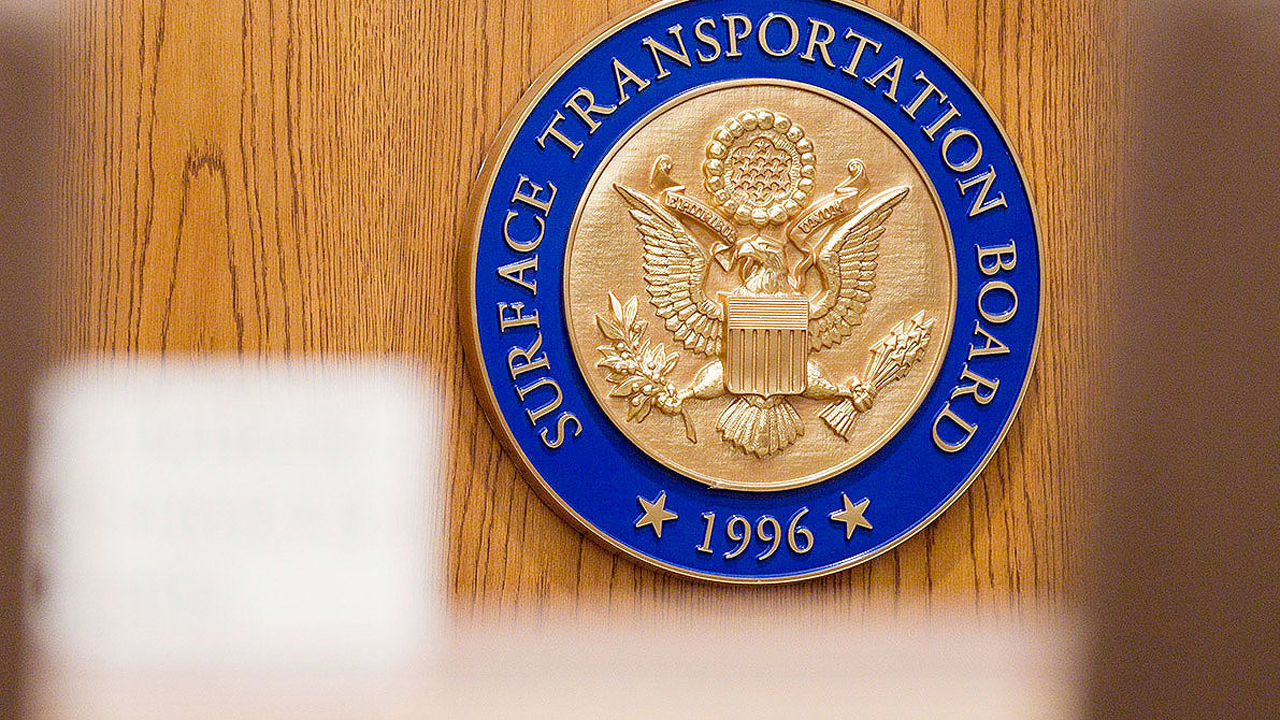
NS, STB Talk ‘Reciprocal Switching’
Written by Marybeth Luczak, Executive Editor
Norfolk Southern (NS) and Surface Transportation Board (STB) officials met last month to address reciprocal switching regulations, which STB first proposed in 2016 and has been encouraged to review by an Executive Order on competition issued in 2021.
Reciprocal switching, a potential STB decree, means “that a railroad with sole physical access to a shipper facility transfer (switch) a shipper’s cars to a junction point with a second (competing) railroad,” explains Railway Age Capitol Hill Contributing Editor Frank N. Wilner. “The second railroad pays a compensatory per-car switching fee whose reasonableness is determined by the STB.
“To obtain reciprocal switching—known as ‘interswitching’ in Canada, where it is in use for more than a century—the shipper must prove to the STB that the reciprocal switch is feasible and necessary to enhance competition.”
STB on July 27, 2016 proposed new regulations in Docket No. EP 711 (Sub-No. 1; download below) “to improve the availability of reciprocal switching” and “allow a shipper to gain access to another railroad if the shipper makes certain showings,” Railway Age reported at the time. Its Notice of Proposed Rulemaking (NPRM) was “an outgrowth of a petition for a rulemaking submitted by The National Industrial Transportation League (NITL) in July 2011.”
NS provided its perspective on the topic during a Dec. 15, 2021 meeting with STB, which included STB member Patrick Fuchs and NS’s Chairman and CEO Jim Squires, EVP and COO Cindy Sanborn, and EVP and Chief Legal Officer Vanessa Allen Sutherland. (It was a precursor to STB’s public hearing on reciprocal switching, set for March 15-16, 2022.)
Following are among the questions STB posed and NS addressed, as provided by a meeting summary (download below).
1) What type of rail environment would justify changes to the reciprocal switching rules proposed in EP 711 (Sub. No. 1)?
NS said that “if railroads were engaging in anticompetitive conduct and refusing to provide customers efficient routes, then forced switching remedies imposed by the Board would be justified, but that such remedies are already available in those circumstances under existing law.” The Class I also “explained why the principle of differential pricing is important,” and “expressed its belief that the Board already has well-developed mechanisms in place to test the lawfulness of rates.”
2) Which of two downside effects of the proposal—the impact on operations or the impact on investment—does NS view as having the greatest impact?
NS responded that it is “concerned by both potential impacts, and questioned the wisdom of adopting an operational measure to address a perceived pricing problem.” To this, Member Fuchs asked which of two approaches to addressing rates would NS prefer: reciprocal switching or rate review, including potential new methodologies? “Neither,” said NS, reiterating that “existing rate reasonableness tests are sufficient.”
3) How does NS evaluate pricing a reciprocal switch fee when reciprocal switch arrangements are entered into voluntarily?
NS explained that “it would look at a variety of factors including the level of investment needed, the impacts on the operation, the impacts on capacity, how responsibilities will be allocated between the two carriers, and the amount of lost contribution.”
4) In the context of mergers, does reciprocal switching advance the public interest?
NS said it “might make sense in isolated cases.” While STB and NS discussed particular examples in the merger context, according to the meeting summary, NS “returned to the point that even in those cases, opening a location to reciprocal switch undermines differential pricing and adds operational complexity.”
5) Are there opportunities to minimize the downside risk of the reciprocal switch proposal?
NS reported that “any systemic change is likely to carry significant risks. The operational risks would be especially acute in a post-pandemic economy, where there is greater uncertainty about customer demand.”
6) In light of potential technological advancements, could expanded access to reciprocal switching remedies create a disincentive to railroads providing more direct routes to customers?
“[I]nnovation risk is a distinct possibility,” NS responded, “because once an operational regulation takes hold then operational arrangements will be locked in to comply with it and difficult to adjust thereafter.”
7) Should shippers be foreclosed from other remedies if the Board opens a reciprocal switch?
“[I]f a switch is open, that customer should not be able to bring a rate case,” NS responded.
8) What would a well-designed pricing policy look like if investment incentives are properly accounted for?
NS said that “under the no-fault system as proposed in EP 711 (Sub. No. 1), the proper policy would be efficient component pricing. Under the fault system embodied in current law, something less than efficient component pricing might be justified.”
9) STB asked about the scope of interchange limits and how downside risk could be reduced.
NS responded that “the greater the limits, the greater the operational complexity and the greater the overall risk. Limiting the scope to terminal areas would limit the impact somewhat, but even then the proposal would still introduce operational complexity. Adding complexity to terminal areas creates difficulties in managing operations and infrastructure requirements.” NS also “expressed concern that the mere possibility of a forced switch will necessitate planning for that possibility, which in and of itself will introduce uncertainty and therefore more complexity into the network.”
Further Reading:
Reciprocal Switching: Complex, Expensive, Time-Consuming (i.e. Mostly a Bad Idea)



